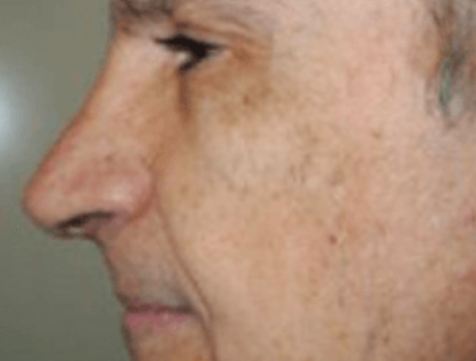Recovering from breast lift surgery involves more than just physical healing—it’s a holistic process encompassing physical, emotional, and practical aspects. As you embark on this transformative journey, understanding the intricacies of the recovery process is paramount. In this guide, we explore in-depth what to expect during the recovery phase of breast lift surgery.
Contents
- 1 1. Preparing for Recovery
- 2 2. Immediate Post-Surgery Phase
- 3 3. Managing Pain and Discomfort
- 4 4. Wound Care and Scar Management
- 5 5. Gradual Resumption of Activities
- 6 6. Emotional Well-Being and Support
- 7 7. Recognizing Signs of Complications
- 8 8. Long-Term Follow-Up Care
- 9 Call Dr. Amy Bandy Today!
- 10 FAQs
1. Preparing for Recovery
Before undergoing breast lift surgery, thorough preparation is key to ensuring a smoother recovery process. Dr. Bandy advises patients to:
- Follow Pre-Operative Instructions: Adhering to pre-operative guidelines provided by Dr. Bandy helps optimize surgical outcomes and minimize risks.
- Arrange Support System: Arrange for a reliable support system to assist you during the initial days of recovery, including transportation to and from the surgical facility and assistance with daily activities.
- Prepare Recovery Space: Create a comfortable and conducive recovery space at home with necessary supplies such as loose, comfortable clothing, extra pillows for elevation, and entertainment options to keep yourself occupied during rest periods.
2. Immediate Post-Surgery Phase
The immediate post-surgery phase is characterized by discomfort, swelling, and restricted mobility. Dr. Bandy explains:
- Pain Management: Prescription pain medications are typically provided to manage post-operative discomfort. It’s important to take these medications as directed by Dr. Bandy.
- Swelling and Bruising: Expect significant swelling and bruising in the days following surgery. Applying cold compresses and following elevation guidelines can help minimize swelling.
- Restricted Activities: Avoid strenuous activities, heavy lifting, and reaching overhead during the initial recovery phase to prevent strain on the surgical incisions.
3. Managing Pain and Discomfort
Effective pain management is essential for a comfortable recovery experience. Dr. Bandy recommends:
- Medication Schedule: Stay ahead of pain by adhering to the prescribed medication schedule. Over-the-counter pain relievers may also be used as directed.
- Ice Therapy: Applying ice packs or cold compresses to the breasts can help alleviate swelling and reduce discomfort. Ensure the ice packs are wrapped in a cloth to prevent direct contact with the skin.
- Comfort Measures: Wear loose-fitting clothing and supportive bras to minimize friction and provide gentle compression to the breasts, promoting comfort during the healing process.
4. Wound Care and Scar Management
Proper wound care is crucial for promoting optimal healing and minimizing the appearance of scars. Dr. Bandy advises:
- Follow Post-Operative Instructions: Adhere to the specific wound care instructions provided by Dr. Bandy, including cleaning the incision sites and applying prescribed ointments or dressings.
- Scar Management Techniques: Discuss scar management options with Dr. Bandy, such as silicone gel sheets, scar creams, or laser treatments, to minimize the visibility of scars over time.
- Sun Protection: Protect the incision sites from direct sunlight exposure during the healing phase to prevent hyperpigmentation and minimize scar visibility. Use sunscreen with a high SPF and wear protective clothing when outdoors.
5. Gradual Resumption of Activities
As the initial discomfort subsides, gradual resumption of daily activities is encouraged. Dr. Bandy explains:
- Light Exercise: Engage in gentle, low-impact activities such as walking or light stretching to promote circulation and prevent stiffness. Avoid high-impact exercises or activities that involve significant upper body movement until cleared by Dr. Bandy.
- Work and Social Engagements: Most patients can gradually return to work and social engagements within 1-2 weeks post-surgery, depending on individual recovery progress and the nature of their job.
- Strenuous Activities: Refrain from heavy lifting, vigorous exercise, and activities that involve extensive arm movements for at least 4-6 weeks post-surgery to prevent complications and support optimal healing.
6. Emotional Well-Being and Support
The emotional aspect of recovery is often underestimated but equally important. Dr. Bandy emphasizes:
- Patience and Realistic Expectations: Understand that the final results of breast lift surgery may take several months to fully manifest as swelling subsides and the breasts settle into their new shape. Be patient and maintain realistic expectations throughout the healing process.
- Emotional Support: Surround yourself with a supportive network of friends, family, and healthcare professionals who can provide encouragement, empathy, and reassurance during your recovery journey.
- Open Communication: Feel comfortable discussing any concerns or emotional challenges with Dr. Bandy during follow-up appointments. Effective communication fosters trust and ensures that your unique needs are addressed.
7. Recognizing Signs of Complications
While complications are rare, it’s essential to be vigilant and recognize warning signs that may indicate a potential issue. Dr. Bandy advises:
- Persistent Pain: Contact Dr. Bandy if you experience persistent or worsening pain that is not alleviated by prescribed medications.
- Excessive Swelling or Bruising: Monitor the breasts for signs of excessive swelling, bruising, or unusual changes in appearance, which may indicate complications such as hematoma or infection.
- Fever or Chills: Inform Dr. Bandy immediately if you develop a fever, chills, or flu-like symptoms, as they could be indicative of an underlying infection that requires prompt medical attention.
8. Long-Term Follow-Up Care
Long-term follow-up care is essential for monitoring your surgical outcomes and addressing any concerns that may arise. Dr. Bandy emphasizes:
- Scheduled Follow-Up Appointments: Attend all scheduled follow-up appointments with Dr. Bandy to ensure that your recovery progress is on track and any potential issues are promptly addressed.
- Continued Support: Dr. Bandy and her team are dedicated to providing ongoing support and guidance throughout your recovery journey, answering any questions you may have and assisting you in achieving the best possible results.
- Lifelong Maintenance: While breast lift surgery can achieve long-lasting results, it’s important to maintain a healthy lifestyle, including regular exercise, balanced nutrition, and sun protection, to preserve the results of your surgery for years to come.
Call Dr. Amy Bandy Today!
For personalized guidance and support throughout your breast lift surgery recovery journey, contact Dr. Amy Bandy at 949-779-8714 today.
FAQs
When can I resume normal activities after breast lift surgery?
Most patients can gradually resume normal activities within 4-6 weeks post-surgery, but it’s essential to follow Dr. Bandy’s specific instructions to avoid complications and support optimal healing.
Will I have visible scars after a breast lift?
While scarring is inevitable with any surgical procedure, Dr. Bandy employs advanced techniques to minimize scarring and ensure the most discreet results possible. Discuss scar management options with Dr. Bandy during your consultation.
How long will it take for swelling to fully subside?
Swelling typically peaks in the first week post-surgery and gradually subsides over the following weeks, with final results becoming evident within a few months. Follow Dr. Bandy’s post-operative instructions, including elevation and ice therapy, to minimize swelling.
Can I breastfeed after a breast lift surgery?
Breast lift surgery may impact your ability to breastfeed, but individual experiences vary. Discuss your concerns with Dr. Bandy during your consultation to understand how the procedure may affect breastfeeding and explore alternative options if necessary.
When can I expect to see the final results of my breast lift surgery?
While you’ll notice significant improvements shortly after surgery, final results may take several months to fully manifest as swelling resolves and the breasts settle into their new shape. Be patient and maintain open communication with Dr. Bandy throughout your recovery journey.













